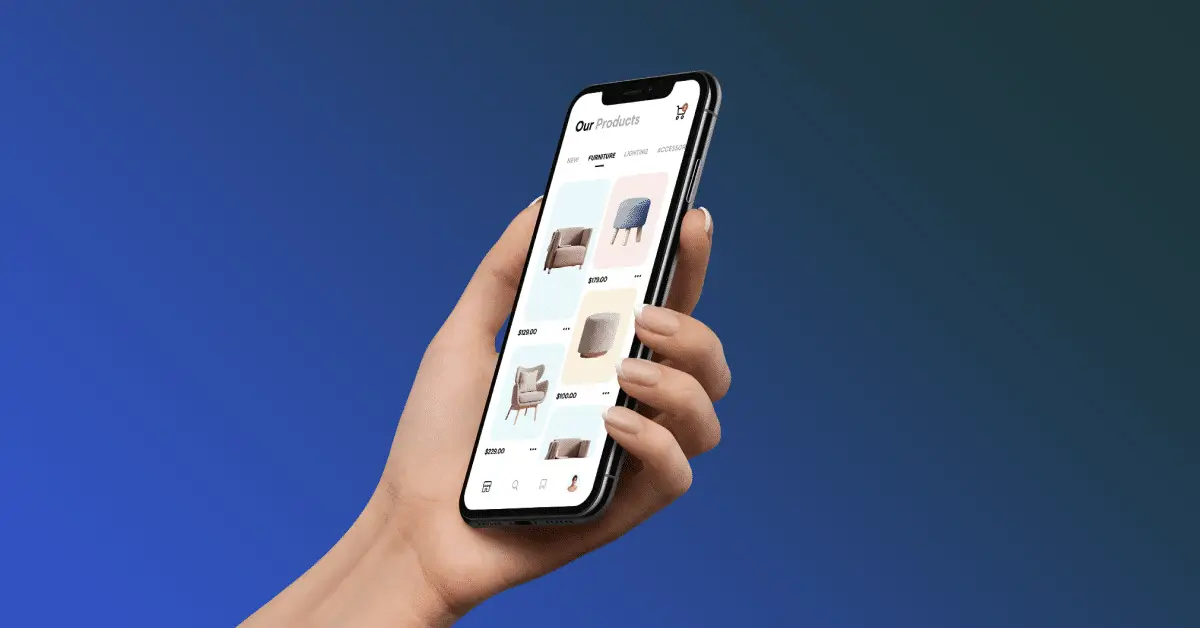That approach, however, is now being taken over by mobile-first website design.
In this article, we’ll show you how to build mobile first website and share with you some mobile first website examples.
What Is Mobile-First Design?
Instead of prioritizing big desktop screens, a mobile-first website design begins with building a site for mobile devices before the desktop version. As you can see below, this approach is centered on the mobile user experience:
- Screen space is much more limited on smartphones and tablets compared to desktop computers
- Touch is the primary interface method, with voice command becoming more popular
- WiFi or mobile data plans are how users connect to the internet instead of faster, more reliable broadband cables
- Attention is at a premium, as mobile users multi-task and swipe through multiple apps and social media feeds
When doing mobile first website design, these elements should be your foremost considerations.
Why Should You Do Mobile-First Design?
Consider the following numbers:
- There are 5.2 billion unique mobile subscribers in the world, which is 67% of the global population
- Mobile traffic makes up half of all global web traffic, making up 51.53% in the second quarter of 2020
- 59% of shoppers say that mobile shopping is important when deciding which brand or retailer to buy from
- 55% of internet users in North America used their smartphones to search online for products to buy, while 41% used their smartphones to buy products online
The numbers don’t lie. Clearly, the majority of people use mobile devices for online experiences. In fact, Google itself implemented mobile-first indexing in 2019 to accommodate this new reality. The search giant uses the mobile version when it indexes and ranks a site.
How to Design Mobile-First Website
Now that we have established how important it is to design your website with mobile design as your priority, here are five best practices on how to create a mobile first website that we recommend you implement:
1. Prioritize Content
Because space is limited on mobile screens, focus on showing the content users expect from your website. Whether it’s a list of ingredients for a recipe, a booking form for a room reservation, or a gallery of high-res product images, that content needs to be front and center.
Minimize your introductions or reduce areas for banner ads if that means sacrificing space that could otherwise be allocated for important information.
2. Ensure Links are Easy to Click
Trying to maximize the amount of content you can put on a mobile screen can lead to having a lot of links that are all bunched up. This can be a frustrating experience for users, especially if they try to tap on one link but end up on the wrong page because their finger accidentally pressed another nearby link.
Remember to give ample space between navigational elements and hyperlinked text. Enlarge buttons so that they fit the size of a thumb or index finger.
3. Amp Up the Speed
When thinking of how to make a mobile first website, remember that your site is constantly fighting for the attention of mobile users. They could be streaming music or podcasts while checking Twitter or Instagram and chatting with family and friends. If your mobile site doesn’t load quickly, visitors will just hit the back button. Google recommends mobile sites to show content to users in 3 seconds or less.
Keep rich media use to a minimum, optimize your site code, and activate the AMP (Accelerated Mobile Pages) version of your site to achieve faster load times.
4. Make Communication Convenient
Engaging mobile users can be accomplished when you let them conveniently communicate through your site. Give them a familiar channel to reach you with features like live chat. You can also have a CTA with a button they can press to send you a text or call you directly.
User feedback is also critical, so allow them to write comments and give you a star rating in a mobile-friendly format.
5. Design for Different Devices
Mobile-first website design isn’t strictly for mobile devices. Although smartphones are going to be your main target, you still have to consider how your site translates to desktop screens. Mobile traffic, after all, only makes up half of the web traffic.
Mobile devices also vary in size, format, and software versions. Make sure to test your design on tablets, on Android and iOS, and on various internet browsers. Google’s Test My Site and Mobile-Friendly Test tools are handy for these tasks.
Make Mobile Design Your Site’s Foundation
Search engines and, more importantly, people lean towards mobile as the online platform of choice. Cater to them by building your site with mobile design as the framework, and reap the benefits of engaged and satisfied users who get what they want quickly at their fingertips.
If you want your site to be mobile-friendly, our team of on-demand mobile design experts has you covered. Meet your Design Force Team today and let’s talk about how we can help you.



